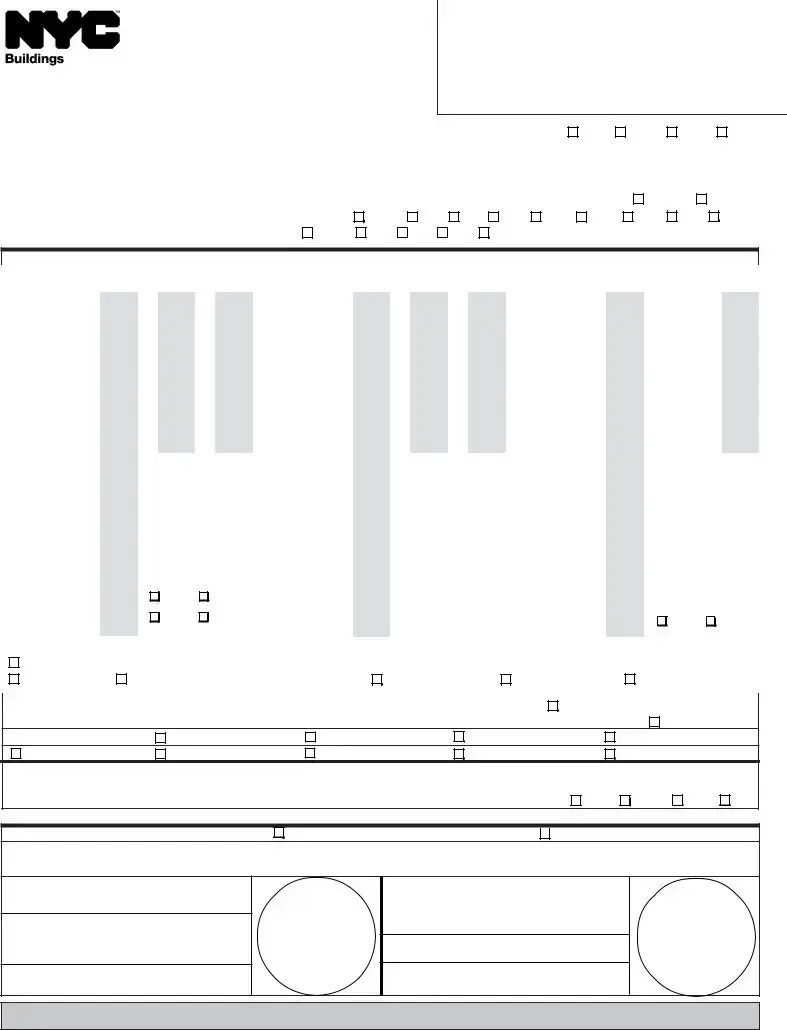The NYC DOB TR1: Technical Report Statement of Responsibility is quite similar to the OP-98 form. Both documents serve to assert that certain inspections or tests have been scheduled or conducted in compliance with the New York City Building Code. The TR1 form focuses on structural, architectural, and building service systems, laying out a framework for professionals to certify that their work meets set standards. Like the OP-98, it requires the signature of the responsible professional, ensuring accountability for the information provided.
Another document akin to the OP-98 is the TR8: Technical Report Statement of Responsibility for Energy Code Compliance. This form is part of the documentation required for ensuring buildings meet the energy efficiency and green building standards as per New York City codes. While the OP-98 deals with plumbing, sprinkler, and standpipe inspection and testing, the TR8 focuses on compliance with energy codes, emphasizing the role of professionals in certifying that design and building practices adhere to environmental sustainability standards.
The PW1: Plan/Work Approval Application shares similarities with the OP-98 form in that it is also a critical piece of documentation within the New York City Department of Buildings' permitting process. This form is an application that initiates the review process for any construction or alteration project requiring a permit. While the OP-98 specifically relates to self-certification of inspections for plumbing and fire suppression systems, the PW1 encompasses a broader range of information about a project, including owner and contractor details, intended use, and compliance with zoning regulations.
The FDNY Letter of Approval is another document related to the OP-98, specifically in the context of fire suppression and alarm systems within buildings. This letter signifies that the Fire Department of New York has reviewed and approved plans for fire suppression, alarm, and communication systems. While the OP-98 allows for the self-certification of the operation of these systems, the FDNY Letter of Approval focuses on the conformity of system design and installation with fire safety standards.
The Certificate of Occupancy (CO) resembles the OP-98 in its ultimate goal of attesting to a building's compliance with laws and regulations, although it serves a broader purpose. A CO is issued by the Department of Buildings when a building is deemed safe and ready for occupancy, verifying its use, compliance with building codes, and suitability for residents. The successful submission and approval of an OP-98 form can be a step towards obtaining or amending a Certificate of Occupancy, as it provides evidence of compliant plumbing and fire suppression systems.
The Alteration Type-1 (Alt-1) Application is akin to the OP-98 in terms of its role in the renovation and construction process. While the OP-98 is focused on certifying completed inspections and tests for specific systems within a building, the Alt-1 application is used for major alterations that will change a building's use, egress, or occupancy. Both documents are essential for ensuring that changes or installations in a building meet all applicable codes and standards, maintaining safety and compliance.
The Limited Alteration Application (LAA) is related to the OP-98 in that it is used for smaller construction projects, such as minor plumbing and fire suppression work that doesn't require a complete building permit. Like the OP-98, which certifies inspections and tests for these systems, the LAA permits minor alterations by licensed contractors, ensuring that even the smallest projects adhere to New York City's strict standards. Through both documents, the city maintains oversight and guarantees the quality and safety of its buildings.
The Equipment Use Permit Application is relevant in the context of installing or altering mechanical equipment, such as boilers, water heaters, and HVAC systems. Similar to the OP-98's function of providing proof of inspection and testing for plumbing and fire suppression systems, this application is necessary to ensure that equipment installation complies with the building code, operational safety, and environmental regulations. It ensures that any mechanical installations or alterations are conducted safely and within regulatory guidelines.
